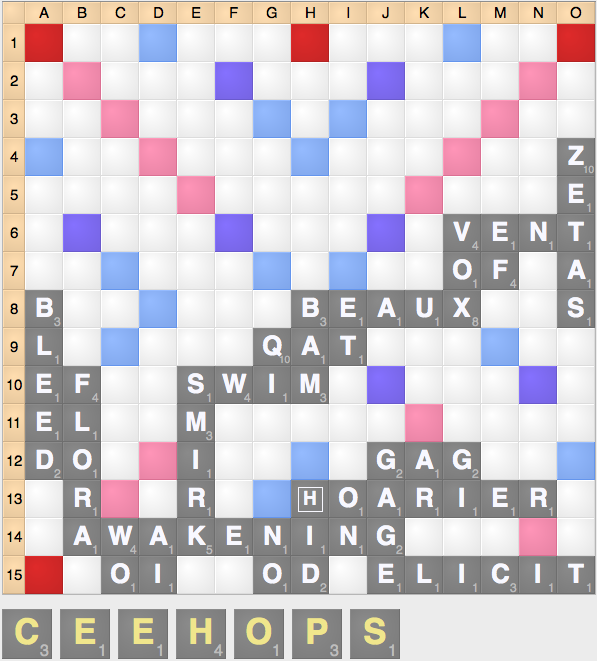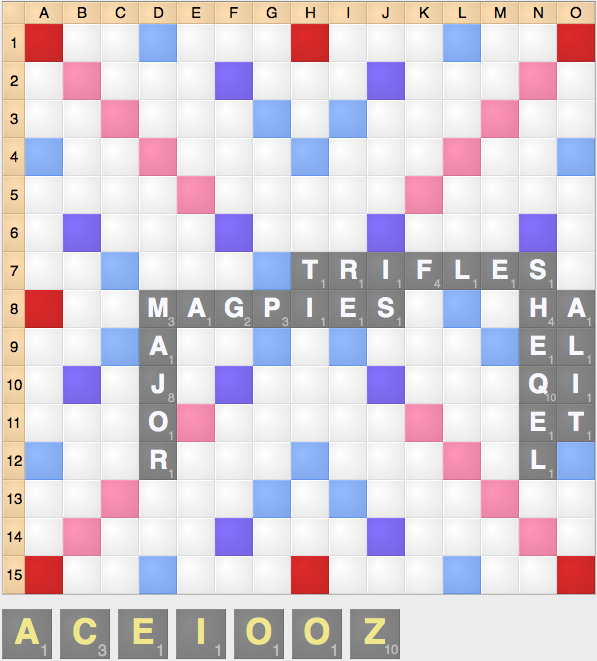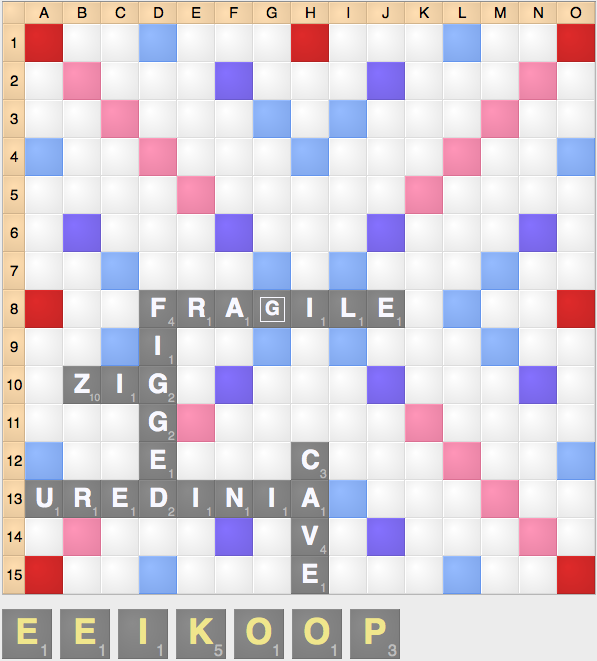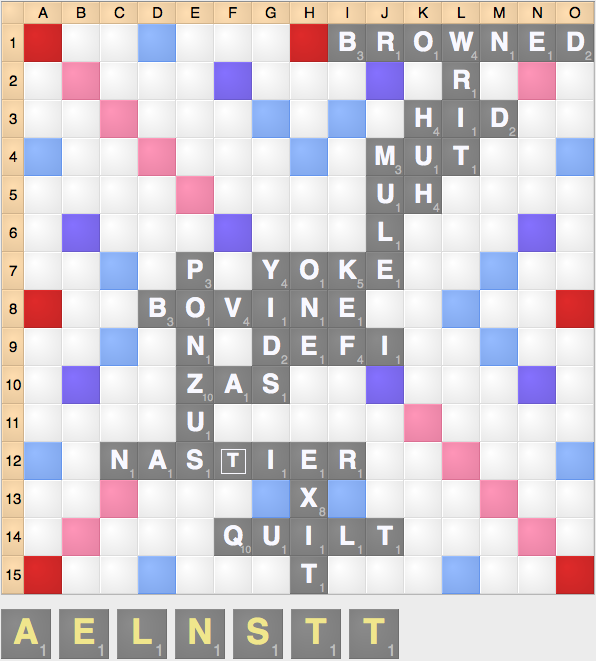How do I find the best play? This is the ultimate problem facing any aspiring tournament Scrabble player. While we see many options and possibilities, figuring out what we should do is not always the simplest task. Many players make decisions based on intuition and feel rather than deduction, analysis and logic. Finding the best play is not an opinion, it is a deduction.
To me, the best way to approach Scrabble is not by whim: it’s as treating every position as an exercise in problem solving. While some problems are easy (it doesn’t take a genius to figure out what to do with ABCGIKN or AAIIOOU), some challenges are more difficult and context-dependent.
This article seeks to change the mindset of strategic Scrabble players, treating Scrabble as a set of puzzles and quandaries that require solutions and enabling these players to make better plays that will help them win more often. It seeks to illustrate the various problems that might occur over the course of the game as well as how players can come up with potential solutions by creating subgoals to solve these problems while still scoring a reasonable number of points.

Score: 282-346

Score: 158-141
Last play: Opponent exchanges 7

In some cases, there are multiple problems that cannot be solved at the same time. In this case, there are two goals: to clear your rack of vowels, and to block the U at a13. These goals can’t be executed at the same time: while COOKIE 12h does a great job at clearing vowels and PUKE a12 does a great job of blocking a13, there is no play that does both. In this case, you need to evaluate each play by making priorities (PUKE scores more points, but getting rid of EIOO is more important than blocking the U, etc.) to make a decision as to which play is better. (In this case, both plays are equal, and it doesn’t matter which play you make.)

These are just some of the many ways that approaching Scrabble as a problem-solving exercise can help you become a better player. In the end, every thought or play that you make should have a point: a purpose that ultimately will help you win the game in the long run. Approaching Scrabble as a problem solving ultimately solves the only problem that matters: how to win the game.
